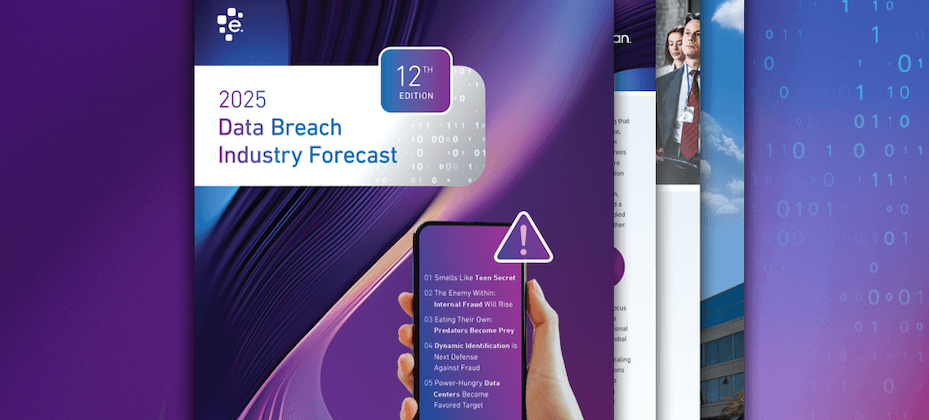
Experian’s Group President of Marketing Services Steve Wagner was recently named Secretary of the Data & Marketing Association’s (DMA) Executive Committee. Elected at the 2016 &THEN global conference hosted in Los Angeles, Wagner joins a group of C-suite level executives from marketing brands, agencies, tech companies, data companies and media companies who serve as DMA Officers and Board members. This coalition of partners is focused on elevating DMA’s mission to champion deeper consumer engagement and business values through the innovative and responsible use of data-driven marketing. Wagner’s election to the executive committee is a reflection of the importance of understanding insights gleaned from big data, which work to power opportunities for marketers to better reach their target audiences. “Unleashing the power of data to drive decision-making is now more critical than ever before in targeted marketing,” said Wagner. “Experian uses big data to help build healthy, robust businesses that better understand their customers’ unique needs and interests, and use that intelligence to predict trends and plan for the future.” When DMA launched in 1917, it united a small group of marketers in Chicago to fight postal regulations. Today, DMA is comprised of data scientists, data technologists, data-inspired designers, creative experts and data-driven marketers, and boasts a network of more than 1,400 member companies representing nearly 100,000 members and participants. In his expanded role, Wagner will work alongside this like-minded group of individuals who are committed to powering opportunities through data. Wagner joined the DMA Board of Directors in April 2016. In addition to his new role as Secretary, he now acts as Chairman of the nominating committee for new DMA board members. The marketing industry is better understanding how to leverage big data as an increasingly vital tool. Being the trade body for the industry, DMA’s shifted focus to data-driven marketing is a recognition of that transition in the marketing industry which views data as an expanding resource to identify and fulfill customer’s needs and interests in a way that improves their lives—seamlessly and efficiently. Recently, along with announcing Wagner’s appointment, DMA rebranded itself with the growing role of data in marketing and advertising, from the Direct Marketing Association to the Data & Marketing Association. At Experian, we view data as a powerful key that unlocks endless opportunities for the future. We know that by unlocking the power of data, we can help marketers better reach their audience and maximize every opportunity while exposing consumers to products that suit their lifestyle. Wagner’s appointment to the Executive Committee of the Data & Marketing Association reflects the increasingly important role that data plays in the marketing industry, as well as the leading role that Experian is playing to help transform the industry.

Kevin Dean, president and general manager of Targeting for Experian sat down with Ginger Conlon, editor-in-chief of GingerConlon.com at DMA’s &THEN 2016 Conference. The two discussed a number of topics, including the re-emergence of third-party data for marketers. As the industry has turned towards data-driven marketing, more brands are again leveraging third-party data to enhance their first-party data, as well as pull insights that enables them to better connect with their customers. To read more from the interview, visit GingerConlon.com.

Temperatures are dropping, leaves are falling and seasonal beverages are selling – it must mean that the holiday season is quickly approaching. And while many people get to wait in anticipation for this magical time of year, marketers are hard at work planning and creating their upcoming holiday marketing campaigns. In fact, many marketers are likely focused on developing their most creative designs and strategic promotions – critical components to any campaign. But they also need to give attention to their subscriber lists. A recent study found that as much as 50 percent of lists are inactive. If audiences are not engaging with the brand’s communications, then brands may experience diminished returns, or worse. Why reactivate? The bottom line is that it is more cost effective for marketers to retain existing customers than to acquire new ones. Past buyers represent higher open, click and transaction rates than non-buyers. By reactivating their inactive subscriber base, marketers have an opportunity to improve the return on each marketing campaign. How to reactivate? Email addresses may appear inactive for a number of reasons. The email address may no longer be in use, the subscriber does not find the content relevant, or the subscriber prefers to scan unopened emails and purchase in other channels. Marketers need to understand the cause behind each inactive address in order to strategically re-engage with past customers. Once marketers are able to identify all of their inactive subscribers, they will want to segment them into buckets. For example, those that clicked but have not purchased in the past 90 days, or those that have opened emails, but not clicked or purchased in the past 90 days. Each person is unique in their behaviors and interests, so marketers will need to engage these subscribers in a variety of tactics. Offering an incentive Using an engaging subject line Utilizing a confirmed opt-in strategy Sending more than one message as part of a reactivation strategy Marketers who strategically reactivate their inactive subscriber base have an opportunity to bring past-customers back into their sales funnel, and experience more return on their marketing campaigns. By leveraging data and insight to identify and re-engage this group, brands and marketers can also have a magical holiday season. To learn more about re-engaging your inactive email subscribers, download our e-book.


